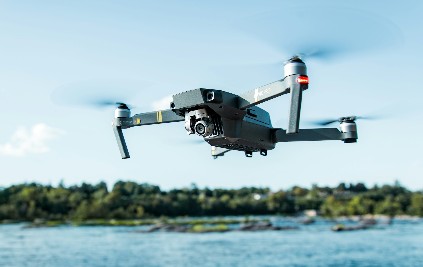For years, unmanned aircraft systems (UAS) have been fundamentally limited by a single constraint: the requirement to keep the drone within the operator’s line of sight during flight. While the sector has thrived under the FAA’s Part 107 regulation, which governs such operations, this framework has never fully liberalized drone usage. As demand shifts toward autonomous deliveries, regulators are hard at work—and the United States is paving the way with a dedicated regulatory approach.
Today, with the recent release of a Notice of Proposed Rulemaking (NPRM) for Part 108, the horizon has expanded significantly. This proposal marks the most important regulatory step toward normalizing “Beyond Visual Line of Sight” (BVLOS) operations in the U.S. In other words, this new regulation aims to unlock truly autonomous drone operations. While the FAA’s proposed Part 108 may not provide all the answers, it lays the groundwork for safe, albeit regulated, BVLOS deployment.
The Current Landscape: A System Based on Waivers
The commercial drone industry has long been governed by Part 107, a regulatory framework that successfully standardized operations for small drones under 55 pounds (25 kg), as long as they remain within visual line of sight (VLOS). This regulation helped create a professional ecosystem of certified pilots, registered aircraft, and safe operational procedures.
However, for any operation that needed to go beyond these constraints—particularly BVLOS—the only recourse was a case-by-case waiver or exemption process. Welcome to the labyrinth of bureaucracy! While necessary, this reliance on waivers created a regulatory bottleneck over time. The process can be cumbersome, and the lack of a standardized framework led to inconsistencies that sometimes hampered operator activities. For example, companies planning large-scale infrastructure inspections, agricultural surveys, or package deliveries found themselves hindered by a system ill-suited to the economic and logistical realities of routine BVLOS flights. While this patchwork of approvals does prioritize safety, it also—unintentionally—hampers investment and innovation. The U.S. drone sector has clearly expressed the need for a future-oriented framework, and Part 108 is the FAA’s direct response.
An Overview of Part 108
Unveiled as part of a broader initiative to “unlock American drone dominance” (no less), Part 108 seeks to replace the waiver system with a set of well-suited standards for BVLOS operations. It’s important to note that Part 108 is not an extension of Part 107. The FAA has crafted an entirely separate framework, specifically designed to address the higher risks and capabilities associated with BVLOS missions.
One of the most significant changes in this regulation is the shift in responsibility from the individual pilot to the operating entity as a whole. Under Part 107, the remote pilot-in-command holds ultimate authority. Part 108 redefines this concept, eliminating the requirement for a traditionally certified pilot. It acknowledges that automated BVLOS operations are governed more by system oversight than traditional piloting skills. A small step for man, a giant leap for drones…
Of course, it’s not that simple. This new model introduces new organizational roles. First, there is the operator. Then there is the operations supervisor, defined as the “person designated by the operator who holds final authority over the safety and regulatory compliance of the missions.” Finally, within the Part 108 framework, there is the flight coordinator, the “person who monitors a drone in flight and can issue commands or trigger emergency actions, acting similarly to a pilot-in-command, but without formal certification.” By clearly defining the roles of the operator, operations supervisor, and flight coordinator, Part 108 aims to streamline accountability and incident/accident claims management.
By focusing on a new organizational model, the FAA is gradually building a regulatory framework distinct from traditional certified aviation—one better suited to managing large-scale fleets of autonomous aircraft.
Why Part 108 Matters for U.S. Operators and Manufacturers
The transition from VLOS to BVLOS is more than just a milestone—it is a necessary leap without which an entire economy cannot flourish. Ultimately, it represents a complete transformation of drone capabilities. Imagine inspecting hundreds of kilometers of pipelines, surveying vast agricultural fields in a single flight, or delivering medical supplies to remote communities. These are the use cases Part 108 seeks to enable. Until now, the absence of standards created uncertainty in the market, making it difficult for industry players to commit. Part 108 introduces a formal “airworthiness acceptance” process, requiring manufacturers to demonstrate that their drones meet FAA-established safety standards in design, construction, and performance.
An Important Step, Not the Finish Line
While the proposal has generally been welcomed by stakeholders, it has also drawn criticism. At recent events such as the Commercial UAV Expo, the consensus was clear: Part 108 is a welcome step forward, but the initial version might be too rigid. Some worry that the requirements could impose excessive constraints on small operators, or that certain technical standards may not keep pace with innovation. These concerns do not represent a setback, but rather a crucial element of the regulatory process. History shows that FAA rules often remain in place for many years. Therefore, it’s essential to ensure the framework’s long-term viability from the outset for the health of the sector. By creating a standardized, scalable, and predictable path for BVLOS operations, the FAA is laying the foundation for a future where autonomous aircraft are fully integrated into national airspace.
Jean-François Bourgain, November 8, 2025, for AeroMorning





Be the first to comment on "Drones as Free as the Air in the U.S. – Showing the Way Forward"